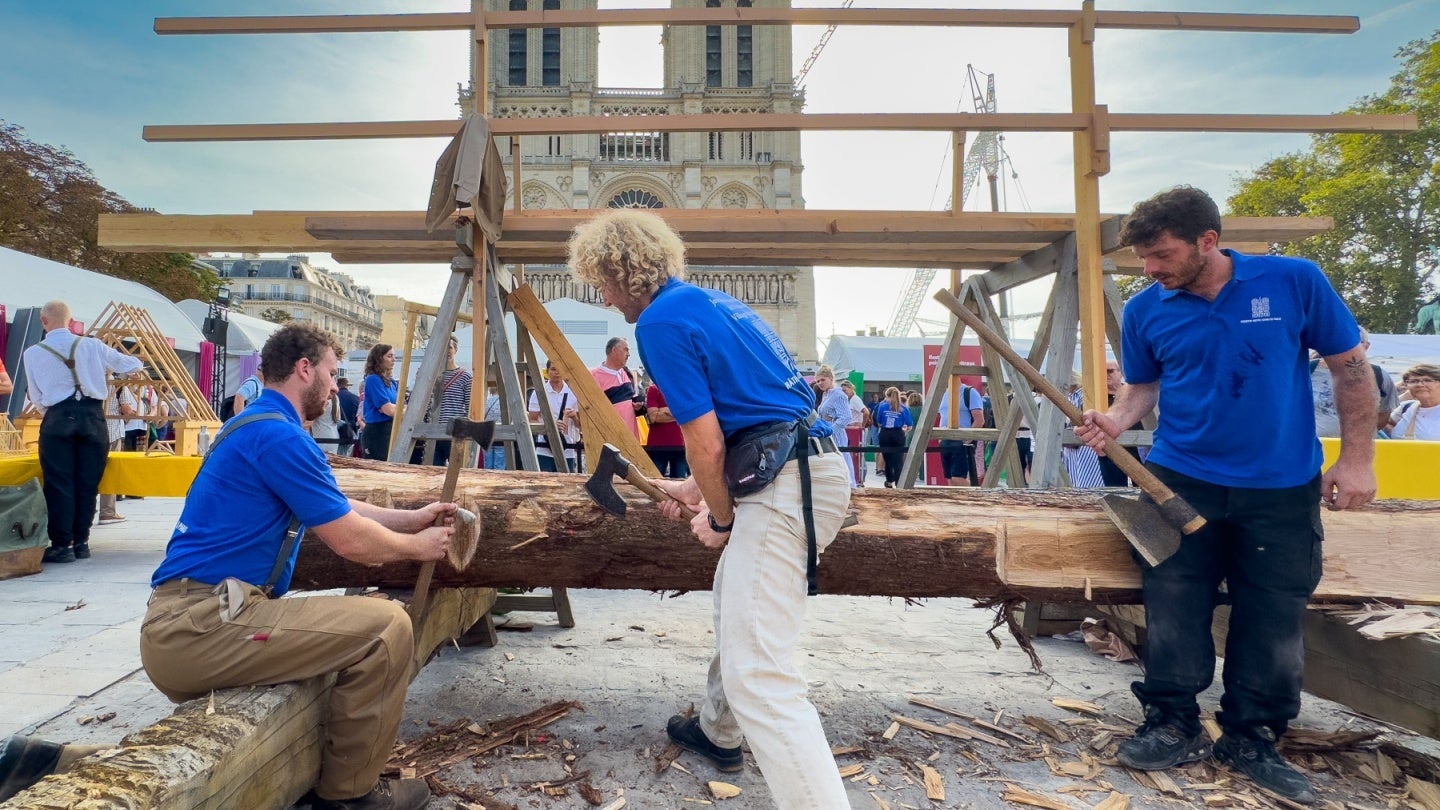Thanks to dedicated artisans and digital twins, the weekend 7 December, will be one of the highlights of 2024 in Paris, as more than 50 heads of state arrive to join in the city’s celebrations for the reopening of its 860-year-old Notre-Dame cathedral, one of the world’s most famous—and most visited—religious buildings.
By the time those heads of state return home, they may likely be asking how their own city authorities are using digital twins – a technology that many people will still be unfamiliar with, but which is becoming a must-have tool for companies, infrastructure providers, and governments.
How digital twins met Gothic architecture
The construction of Notre-Dame Cathedral took place between the 12th and 14th centuries when a wave of cathedral building began, initially in Northern France, starting with the Abbey church of St Denis and Sens Cathedral, and then spreading across Europe, including to the UK, where the pioneering cathedrals adopting Gothic architecture were Canterbury, Wells, Lincoln, Winchester, and Salisbury.
Gothic cathedrals are known for their height and light and are typically built with pointed arches, ribbed vaults, and flying buttresses. In France they tended to build cathedrals high; in England, they built them long.
But wherever they were built, there are scarcely any complete records of construction, plans, or anything resembling a blueprint. Only in Canterbury is there an archive that recounts its architectural history.
For that reason, rebuilding a world-famous cathedral like Notre-Dame after the fire of April 15, 2019, was a huge challenge. But it was a familiar one. Cathedral fires—and building collapses—have happened throughout history and cathedrals have continually been rebuilt after disaster.

US Tariffs are shifting - will you react or anticipate?
Don’t let policy changes catch you off guard. Stay proactive with real-time data and expert analysis.
By GlobalDataDigital twins and BIM
With the range of construction technologies available today, such as digital twins and building information modelling (BIM), rebuilding Notre-Dame was not an insurmountable problem. But the horror of the fire, the five-year program of rebuilding and cleaning the cathedral, and now its reopening will continue to be conducted in the eye of the media. The formal re-opening will be watched by hundreds of millions of people on worldwide media.
Arguably, never has building a cathedral gained so much worldwide attention—nor cost as much. The cost of rebuilding the cathedral is expected to be around €850m ($901m). That cost, however, has been borne by donors. In total, €846m were raised in donations from 340,000 donors in 150 countries.
Artisans and modern technology
As well as the donors, Notre-Dame’s reconstruction has involved around 1,000 artisans from around the world: masons, carpenters, restorers, roofers, foundry workers, art experts, sculptors, and engineers. It has also involved technology companies like Autodesk that used its 3D digital modeling, digital twins, and BIM skills to aid the reconstruction.
Autodesk partnered with Art Graphique & Patrimoine (AGP), a French company specialising in laser scanning and the digitisation of historic monuments. Out of this partnership, a highly detailed digital twin of Notre-Dame was created by combining existing scans with new laser surveys. The model was provided free of charge to the public institution Rebâtir Notre-Dame and made available to construction site stakeholders via a technology and skills patronage agreement.
“A shock of hope”—and a showcase for technology
In a recent speech to around 1,300 craftspeople who had worked on the rebuilding project, French President Emmanuel Macron said, “The shock of the reopening will be as great as that of the fire, but it will be a shock of hope.”
It is the craftspeople who are the heroes of the project. It has taken five years to rebuild Notre-Dame, which may seem a long time, but in real terms has been incredibly swift. Across history, the building of cathedrals typically takes at least 200 years, and some a lot more.
For example, the construction of Milan Cathedral—the Duomo of Milan—took 579 years, from 1386 to 1965.
We may not have the original designs and blueprints for the world’s great cathedrals. But what we do now have is the ability to create digital models of them, using tools like digital twins, which will help renew, renovate, and, if necessary, rebuild much-loved buildings like Notre-Dame.





